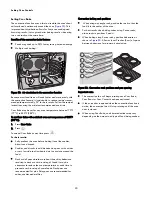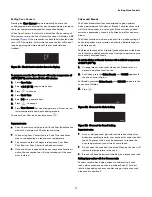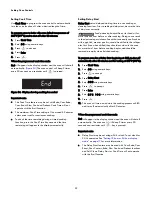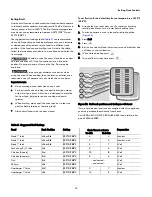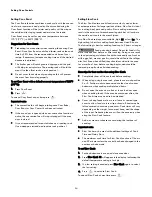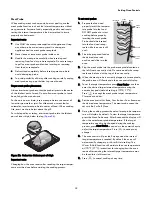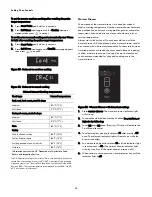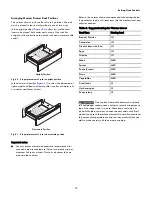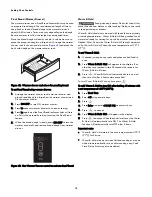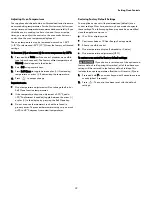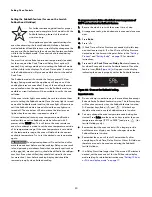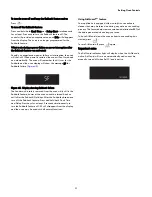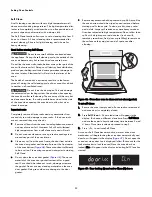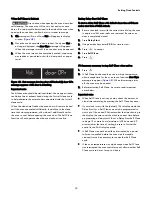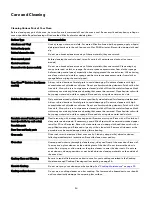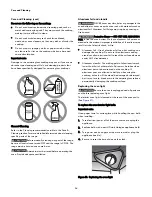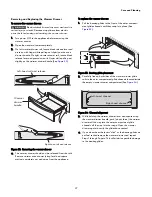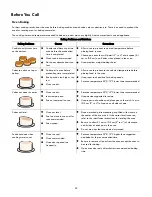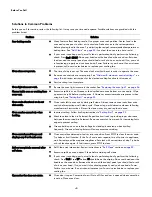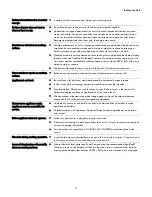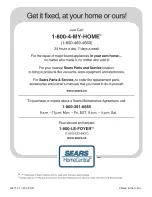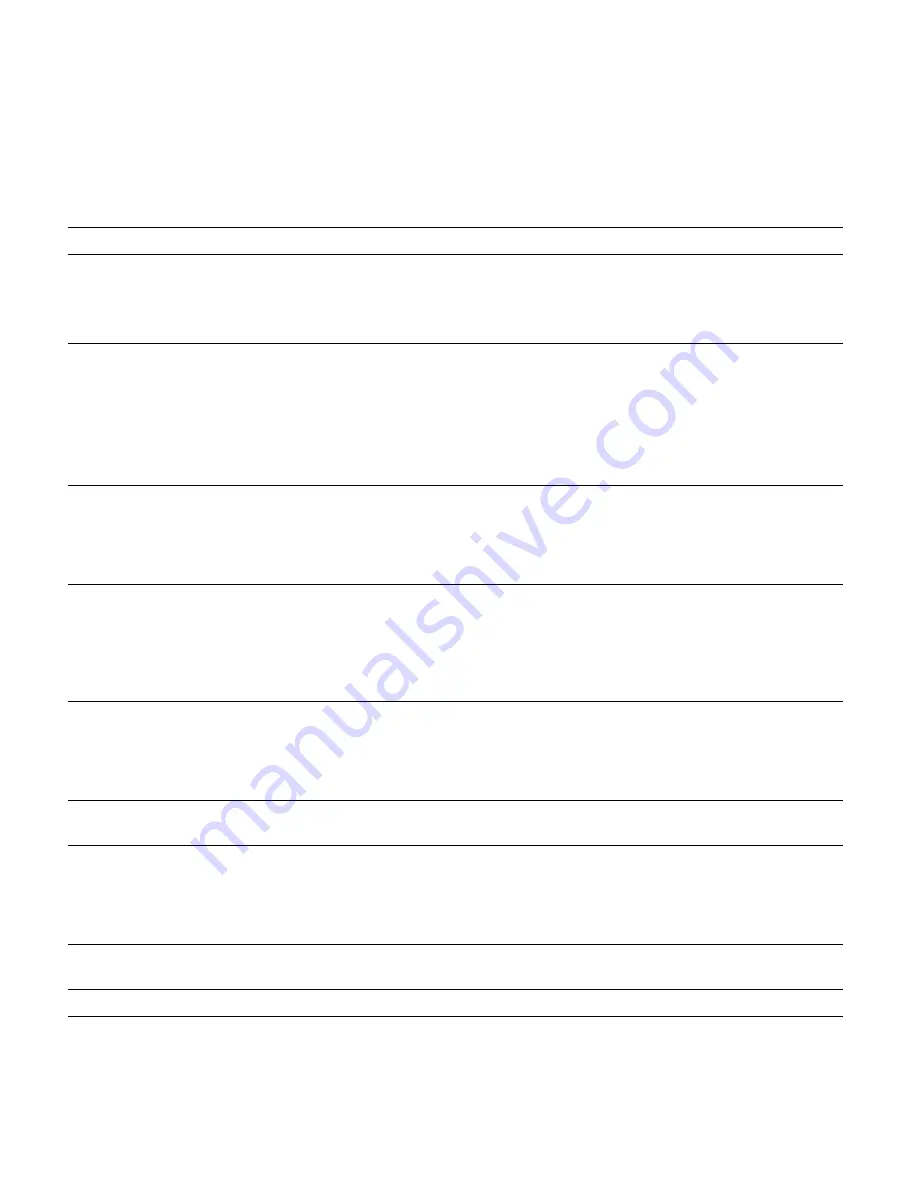
34
Care and Cleaning
Cleaning Various Parts of Your Oven
Before cleaning any part of the oven, be sure all controls are turned off and the oven is cool. Remove spills and any heavy soiling as
soon as possible. Regular cleaning will reduce the difficulty of major cleaning later.
Surface Type
Recommendation
Aluminum and Vinyl
Painted body parts
Painted decorative trim
Use hot, soapy water and a cloth. For more difficult soils and built-up grease, apply a liquid
detergent directly onto the soil. Leave on soil for 30-60 minutes. Rinse with a damp cloth and
dry.
Do not use abrasive cleaners on any of these materials; they can scratch.
Oven control panel
Control membrane
Decorative trim (some models)
Before cleaning the control panel, turn all controls off, activate oven lockout (on some
models).
Do not use abrasive cleaners on any of these materials; they can scratch. Clean using hot,
soapy water and a cloth or sponge. Be sure to squeeze excess water from cloth or sponge
before wiping control panel, especially when wiping around the controls area. When rinsing,
use clean water and a cloth or sponge and be sure to squeeze excess water from cloth or
sponge before wiping the control panel.
Easy Clean™ Stainless Steel (some
models)
Always rub in direction of metal grain to avoid damaging. Do not use cleaners with high
concentrations of chlorides or chlorine. Do not use harsh scrubbing cleaners. Polish with a lint
free cloth. Always be sure to wipe excess cleaner/polish off from the metal surface as bluish
stains may occur during future oven heating that cannot be removed. Clean heavier soils with
hot, soapy water and a cloth or sponge. Rinse and dry using clean
water and a cloth.
Stainless Steel (some models)
Only use cleaners and polishes that are specifically manufactured for cleaning stainless steel.
Always rub in direction of metal grain to avoid damaging. Do not use cleaners with high
concentrations of chlorides or chlorine. Do not use harsh scrubbing cleaners. Polish with a lint
free cloth. Always be sure to wipe excess cleaner/polish off from the metal surface as bluish
stains may occur during future oven heating that cannot be removed. Clean heavier soils with
hot, soapy water and a cloth or sponge. Rinse and dry using clean water and a cloth.
Porcelain enamel broiler pan and
insert (available by mail order)
Porcelain parts
Door liner and body parts
Gentle scouring with a soapy scouring pad will remove most spots. Rinse with a 1:1 solution of
clear water and ammonia. If necessary, cover difficult spots with an ammonia-soaked paper
towel for 30 to 40 minutes. Rinse with clean water and a damp cloth, and then scrub with a
soap-filled scouring pad. Rinse and wipe dry with a clean cloth. Remove all cleaners or the
porcelain may become damaged during future heating.
Oven racks
Oven racks must be removed from oven cavity. Clean by using a mild, abrasive cleaner
following manufacturer’s instructions. Rinse with clean water and dry.
Oven door
Use soap and water to thoroughly clean the top, sides, and front of the oven door. Rinse well.
You may use a glass cleaner on the outside glass of the door. Do not immerse the door in
water. Do not spray or allow water or the glass cleaner to enter the door vents. Do not use
oven cleaners, cleaning powders, or any harsh abrasive cleaning materials on the outside of
the oven door.
Cooktop Care and Cleaning
Be sure to read all information on how to care for your cooktop contained in the Cooktop
Maintenance and Cooktop Cleaning sections starting on page 36.
Ceramic Cooktop
Do not use spray oven cleaners on the cooktop.
See “Cooktop Maintenance”
on
page 35
.
Cooktop surface burners
Do not use a cooktop cleaner on a hot cooktop. The fumes can be hazardous to your health
and can chemically damage the ceramic-glass surface.

